Contents
FiftyOne by Voxel51
Alternatives to Voxel51
Encord Active
Aquarium Learning
Scale Nucleus
SceneBox
Superb AI
Voxel51 Alternatives: Key Takeaways
Encord Blog
Top Alternatives to Voxel51
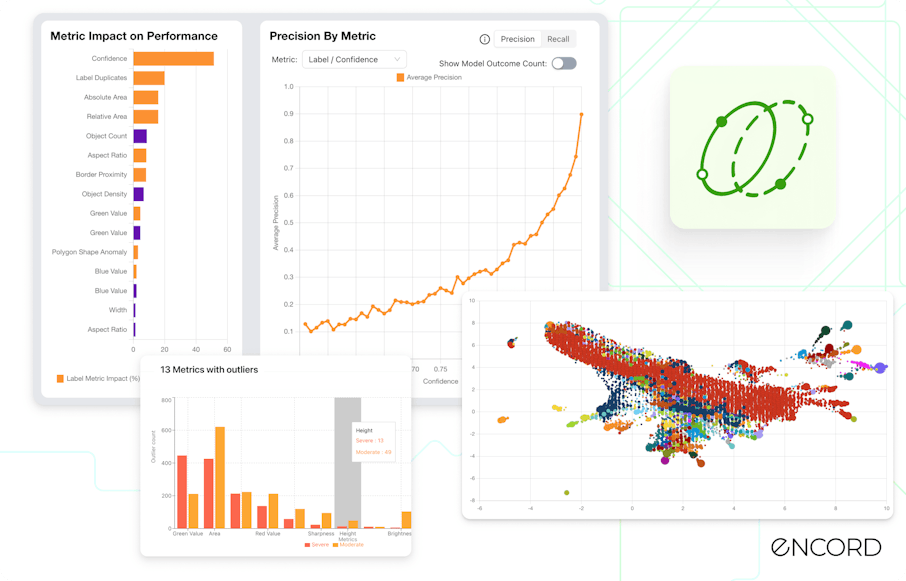
Implementing computer vision (CV) systems is becoming more challenging with the rise of big data and the need for real-time processing.
Data management and curation tools are now crucial in developing, deploying, and monitoring CV models. Yet, finding a tool that aligns perfectly with specific project requirements can be daunting. While Voxel51 is a well-known tool for managing CV projects, users often find its interface complex and its lack of an internal labeling feature limiting.
Additionally, despite integrating with open-source labeling solutions, it struggles with large and complex datasets.
Due to this, alternatives exist that offer more flexibility and scalability. In this article, we will explore tools, including:
- Encord Active
- Aquarium Learning
- Scale Nucleus
- Scenebox
- Superb AI
FiftyOne by Voxel51
FiftyOne - an open-source platform by Voxel51, is a popular option for CV modeling. It has features to visualize, explore, and search data points with model evaluation tools to help you identify potential issues.
Below are a few benefits and challenges of using FiftyOne to manage your CV projects.
Benefits of Voxel FiftyOne
The following highlights the benefits of FiftyOne.
- Intuitive Visualizations: FiftyOne lets you visualize embeddings to understand deeper data patterns.
- Indexation for better search: It indexes samples based on similarity to specific modeling scenarios. The feature allows you to find scenarios in the evaluation set that might be responsible for model failures.
- Unique Images: FiftyOne computes a measure that tells which image is unique. Training on these images improves training performance by preventing the model from overfitting to similar examples.
- Identify labeling errors: The tool has an automated mistakenness measure that tells the number of incorrect labels. It also helps identify object localization errors and missed objects within images.
- Hardness: With FiftyOne, users can identify samples that are hard to predict. They can feed these samples into the training data pipeline for optimal model performance.
- Metadata: You can quickly add metadata to your samples using the metadata class, which lets you specify several pre-defined image attributes.
- Cost-effective: FiftyOne is open-source, making it a cost-effective tool for managing CV projects.
Challenges with Voxel FiftyOne
While FiftyOne provides the features mentioned above for efficient model development, the platform has a few limitations, as listed below.
- Difficult to scale: FiftyOne is difficult to scale as it does not allow you to expand data pipelines to manage increasing data volumes.
- Lacks automated annotation: It lacks smart, automated annotation capabilities that help speed up the labeling process.
- Supports limited annotation methods: In addition, Voxel51 integrates with the Computer Vision Annotation Tool (CVAT) to annotate images. It only supports basic annotation methods such as bounding boxes, polygons, polylines, and key points.
- Difficult to set up collaboration tools: While FiftyOne Teams lets you collaborate with your team on a specific dataset, it requires separate installation and configuration for dependencies.
- Requires coding skills: Although FiftyOne lets you identify labeling errors, the process involves excessive coding. Also, the tool lacks advanced QA features such as consensus mechanisms and automated scores to spot labeling inconsistencies.
- Data search is not user-friendly: Searching for specific data samples is tricky as you need to create views through custom code.
- Loading data with a custom format is inefficient: While FiftyOne lets you directly load public datasets like COCO, Open Images, and ActivityNet, loading custom data formats requires a Python loop. This can be significantly slow if the data is large.
Due to these problems, you should consider alternatives to FiftyOne that allow you to manage more complex datasets through a user-friendly interface with minimal code.
Alternatives to Voxel51
Modern CV applications work on large, complex datasets, requiring real-time integrations with data pipelines to streamline the user experience.
Considering Voxel51’s limitations, the list below provides an overview of a few viable alternatives to build, deploy, monitor, and interpret enterprise-level CV models.
Encord Active
Encord Active is an end-to-end CV platform for finding and fixing label errors through data exploration, model-assisted quality metrics, and a one-click labeling integration. It takes a data-centric approach to improving model performance.
Encord Active is available in two versions: Encord Active Cloud and Encord Active OS. Encord hosts Active Cloud and Encord Annotate (annotation platform), which are closely integrated for active learning workflows. Encord Active OS is an open-source toolkit that can be installed on a local server.
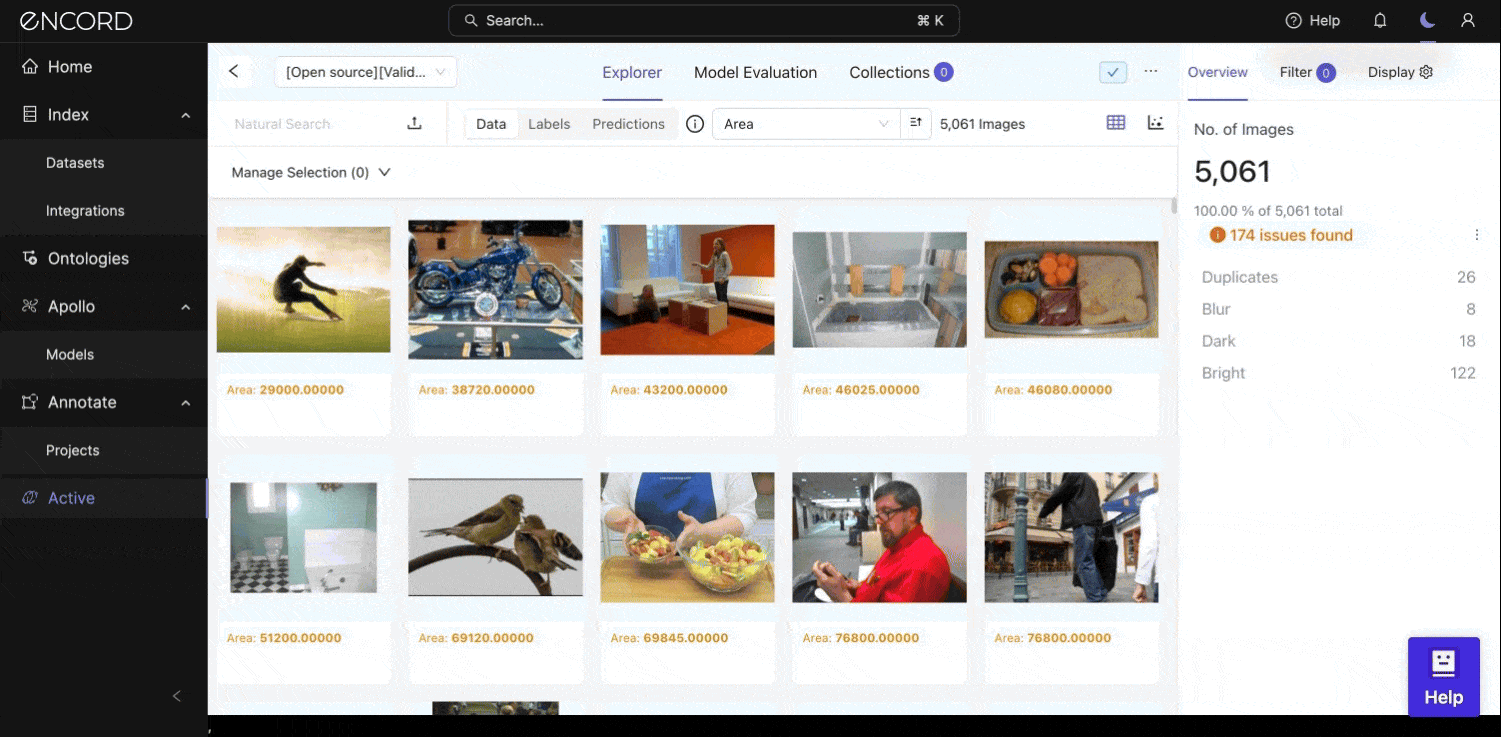
Features
- Scalability: Encord Active can handle over 500,000 images per project and two hour-long videos at 30 fps.
- Integration with Encord Annotate: Encord Active integrates with Encord Annotate for editing and annotating images on a single platform. This also includes workflows, bulk classifications, and syncing project data.
- Natural Language Search: The platform has a natural language search feature that allows you to discover data through simple descriptive queries.
- Model Unit Tests: Curate your dataset with Collections and easily see your model performance on data units.
- Evaluation Metrics: It features intuitive dashboards that display detailed insights on your model’s quality based on in-built and custom evaluation metrics.
- Multiple Label Types: Encord Active supports multiple label types, including classification, bounding box, polygon, polyline, bitmask, and key-point for object detection and image segmentation.
- Supported Formats: The platform supports image, video, geospatial, and medical data formats, including DICOM and NIFTI.
- Collaboration: Collaborative features, including multi-tenancy and adding comments to images.
- Data Integration: Encord lets you integrate with cloud storage platforms by Amazon Web Services (AWS), Microsoft Azure, Google Cloud Services, and Open Telekom Cloud OSS.
- Minimal Coding Requirements: Encord Active is a low-code solution that is easy to configure and operate compared to Voxel51.
- Setup Effort: It's easy to get up and running with Encord Active—import datasets directly from Annotate or locally.
Best for
- Teams that want a scalable end-to-end data platform to build high-quality data and evaluate CV applications for multiple industrial use cases in manufacturing, retail, and healthcare.
Pricing
- Encord has a pay-per-user model - it doesn’t charge based on usage or workload.
Aquarium Learning
Aquarium is a data curation solution for ML models that helps you find relevant data for a specific problem and highlights critical errors using embeddings.
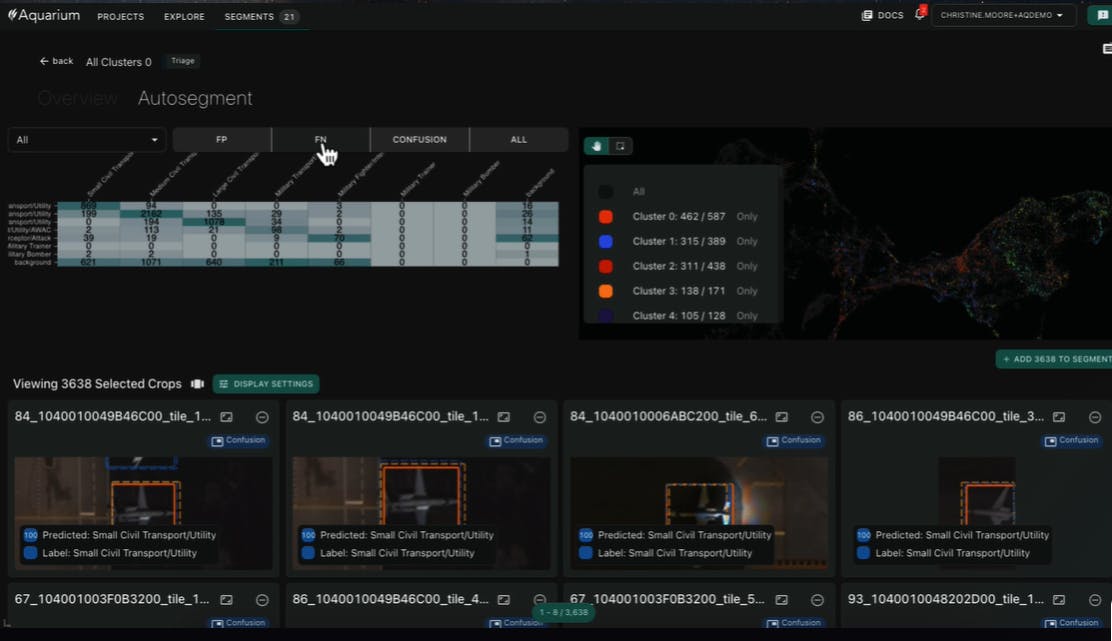
Features
- Scalability: Aquarium has data segmentation features that let you easily manage large-scale datasets.
- Automation: The platform features Webhooks that let you automate labeling workflows through integration with any labeling service.
- Collaboration: The tool lets you onboard team members by adding to projects for easy collaboration.
- Searchability: Aquarium features a query bar to search data based on filter frames, labels, and metadata.
- Loading Data: With Aquarium, you can upload labeled and unlabeled data and model inference data in four quick steps.
- Embeddings: Aquarium features advanced embedding technology to uncover complex data patterns.
- Computer vision tasks: It supports image classification, 2D and 3D object detection, and segmentation.
- Data security: The platform has an Anonymous mode to protect sensitive data.
Best for
- Teams that are looking for a tool to streamline data science processes to ensure high data quality.
Pricing
- Aquarium has a starter, team, business, and enterprise plan.
Scale Nucleus
Nucleus by Scale AI is a data management solution that lets you search, visualize, and curate data for ML models through advanced search functionality and API integrations.

Features
- Scalability: Nucleus is a highly scalable tool that features sensor fusion, active tooling, and automated benchmarks for handling large-volume datasets in the order of million annotations
- Automation: The platform uses machine learning (ML) for managing annotation pipelines and reducing manual workload to identify and fix labeling errors.
- Annotation methods: Nucleus supports multiple annotation methods, such as boxes, polygons, points, lines, cuboids, etc., including semantic segmentation
- Collaboration: The tool allows team members to comment on data items, tag other members, and fix issues for efficient problem resolution.
- No-code solution: Nucleus offers a user-friendly interface to manage data curation and exploration workflows, debug models, and find missing labels.
- Searchability: The platform’s natural language and visual search features help you search data through simple queries and image similarity.
- Find labeling errors: Nucleus lets you examine ground truths against model predictions through an intuitive user interface.
- Find rare events: It allows you to mine for rare events and select relevant data for annotation.
- Insights Tab: The Insights tab displays critical metrics measuring dataset imbalance and class correlation.
Best for
- Startups searching for an easy-to-use data curation and experimentation platform.
Pricing
- The platform has an enterprise plan for large-scale organizations and a self-serve plan for experimental projects.
SceneBox
Scenebox is a robust data management platform that features data discovery, cleaning, and labeling functionalities with tools to identify model failures and fix data error
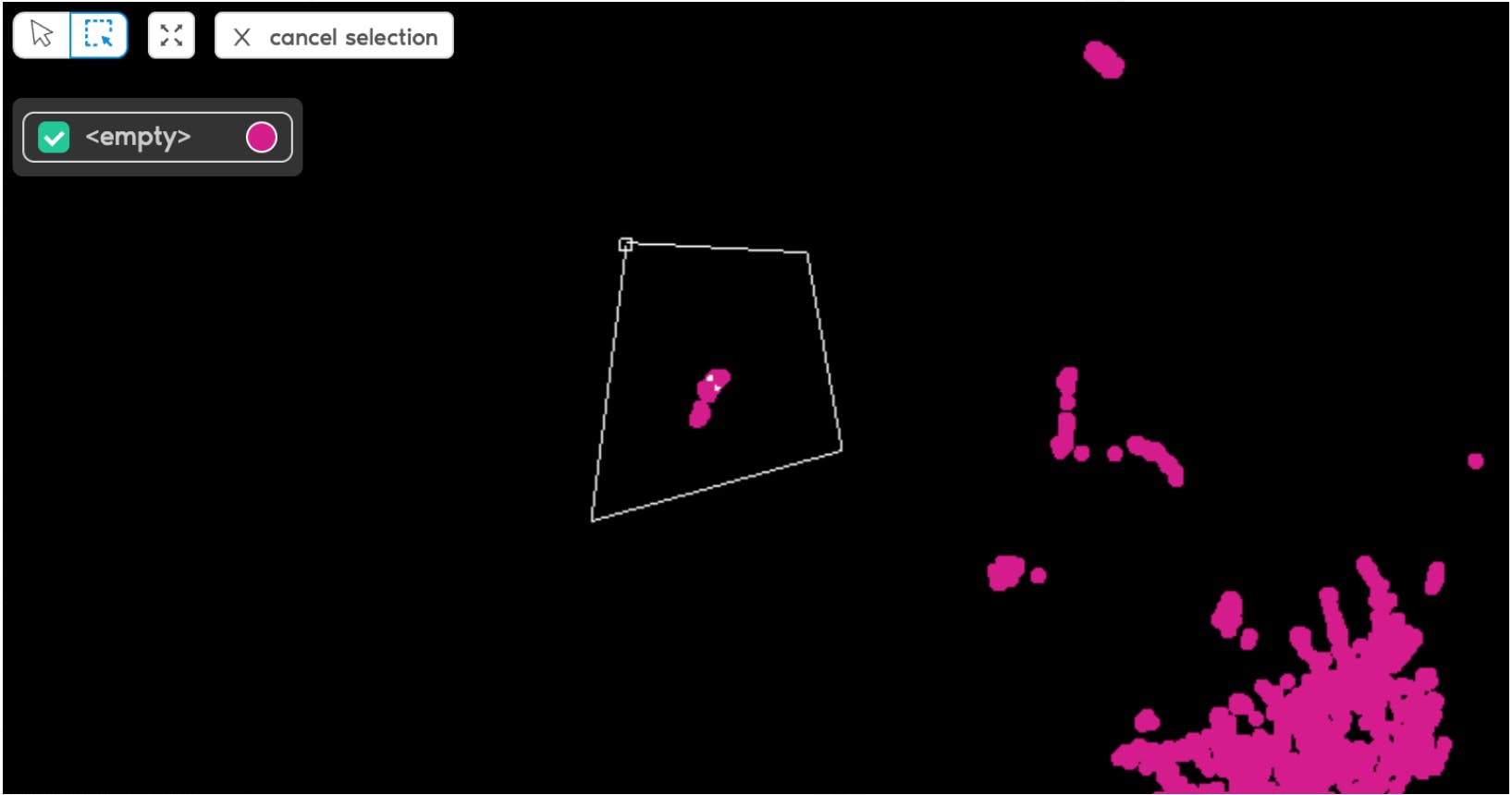
Features
- Collaboration: Scenebox integrates with Jira - a widely-used software development tool - to curate data, trace bugs, and measure progress.
- Setup: Installation and setup involve a one-step process using Python.
- Searchability: Scenebox lets you search data based on multiple filters and metadata. The web app also features a search bar that has pre-defined filters for quick discoverability. It allows for similarity search based on embeddings.
- Deployment: Users can choose the Software-as-a-Service (SaaS) or on-premises deployment options.
Best for
- Teams that want a secure on-premises solution that lets them work with data in its native environment.
Pricing
- Pricing is not publicly available for Scenebox.
Superb AI
Superb AI is a data management platform for CV projects that lets you annotate datasets and identify labeling errors with tools to train and deploy models automatically with AI-based data curation features.
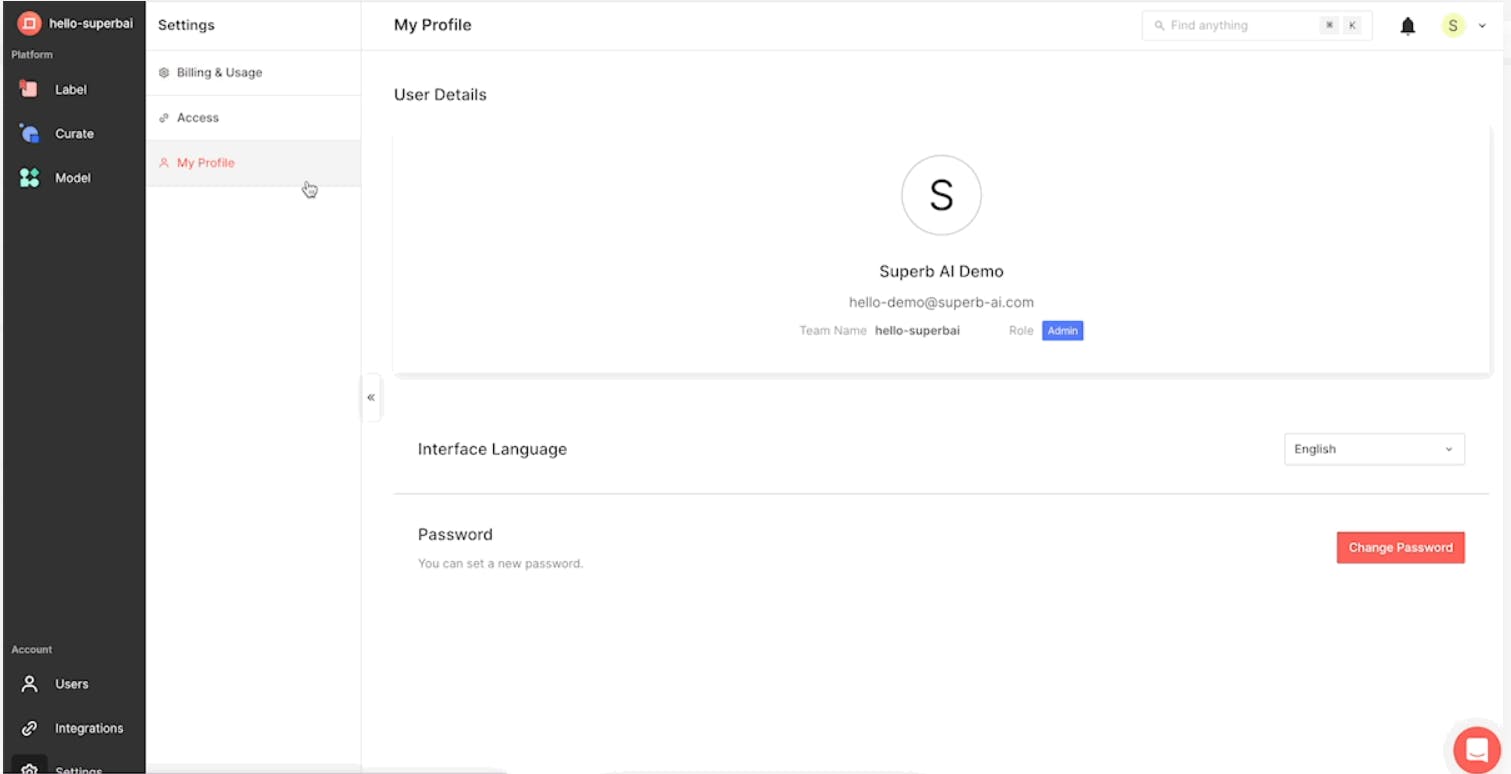
Features
- Scalability: Superb AI helps you scale labeling workflows by offering integrated services involving experts handling the entire annotation pipeline.
- Automation: The platform consists of auto-curate and auto-label features that let you curate datasets with a simple click of a button and label samples using AI.
- Setup: Setting up Superb AI quickly involves account creation and language settings.
- Collaboration: Superb AI allows you to set up team member roles as owner, labeler, reviewer, admin, and manager to collaborate on several phases of projects.
- No-code: Superb AI offers an intuitive user interface to curate, label, and deploy models requiring no coding expertise.
- Searchability: The tool has a query search builder that lets you define custom queries for discovering data based on annotation information and metadata.
- Loading Data: Superb AI offers several options for uploading data in multiple image and video formats.
Best for
- Teams who want a tool for building and deploying basic CV applications that require training data with simple annotations.
Pricing
- Superb AI has starter and enterprise versions for small and large-scale projects.

Voxel51 Alternatives: Key Takeaways
As CV applications become more complex and requirements to maintain data quality increase, organizations in the AI space must quickly invest in the right CV platform to survive in the current digital ecosystem.
The following are a few critical points you should remember.
- Benefits of FiftyOne: FiftyOne is an open-source tool with intuitive visualization features for analyzing datasets. It has features to identify labeling errors, improve training performance, and manage metadata.
- FiftyOne’s Limitations: FiftyOne requires extensive coding expertise to configure and operate. It lacks the advanced features such as automated labeling techniques and curation capabilities required for handling the latest computer vision frameworks and data complexities.
- Alternatives: Encord, Aquarium, Nucleus, Scenebox, and Superb AI are popular alternatives to FiftyOne, offering robust functionality for model-building and managing data for CV models to ensure ease of use, scalability, and data quality.
Explore our products
- Encord, Scenebox, and Aquariums are a few popular alternatives to Voxel51.
- You should look for observability tools with robust security features, collaboration tools, and intuitive dashboards that summarize model performance.
- You can monitor model performance by tracking multiple metrics like accuracy scores, data drift, latency, etc., using pipelines that work in real-time.
- Encord, Aquarium, and Nucleus are popular curation tools for large-scale enterprises working with complex multi-modal data.
- Encord, Scenebox, and Nucleus have data management and curation tools that are ideal for handling large data volumes and variety.




